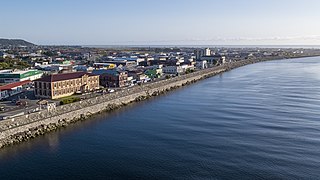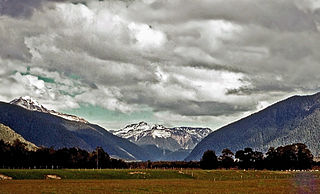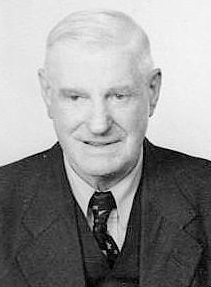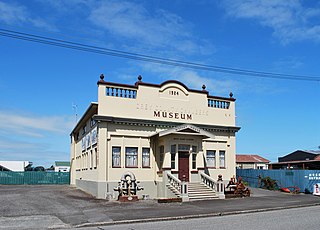Related Research Articles

Greymouth is the largest town in the West Coast region in the South Island of New Zealand, and the seat of the Grey District Council. The population of the whole Grey District is 14,800, which accounts for 43% of the West Coast's inhabitants. The Greymouth urban area had an estimated population of 8,640. A large proportion of the District, 65%, is part of the Conservation Estate owned and managed by the Department of Conservation making Greymouth a natural centre for walkers and trampers.

Reefton is a small town in the West Coast region of New Zealand, approximately 80 km (50 mi) northeast of Greymouth, in the Inangahua River valley. Ahaura is 44 km (27 mi) south-west of Reefton, Inangahua Junction is 34 km (21 mi) to the north, Maruia is 63 km (39 mi) to the east, and the Lewis Pass is 66 km (41 mi) to the south-east.

The Stillwater Ngākawau Line (SNL), formerly the Stillwater–Westport Line (SWL) and the Ngakawau Branch, is a secondary main line, part of New Zealand's national rail network. It runs between Stillwater and Ngakawau via Westport on the West Coast of the South Island. It was one of the longest construction projects in New Zealand's history, with its first section, at the south end, opened in 1889, and the beginnings of the Ngākawau Branch, at its Westport end, in 1875. The full line was completed in 1942. The only slower railway projects were Palmerston North to Gisborne, 1872 to 1942, and the Main North Line to Picton, 1872 to 1945.

Peter James O'Brien was a New Zealand politician of the Labour Party.
The following lists events that happened during 1865 in New Zealand.

Grey, originally formed as Greymouth, is a former parliamentary electorate in the West Coast region of New Zealand. The electorate of Greymouth was created for the 1881 general election, and lasted until 1890. In 1890 the Grey electorate was created, and was abolished in 1919.

James Begg Kent was a New Zealand politician of the Labour Party. He served as a Member of Parliament and was both a borough councillor and deputy mayor of Greymouth.

Joseph Petrie was a 19th-century Member of Parliament from Westland, New Zealand.
William Henry Harrison was a 19th-century journalist from Greymouth who represented two Westland electorates in the New Zealand House of Representatives.

Grey County was one of the counties of New Zealand in the South Island.
The Greymouth Star, formerly the Greymouth Evening Star, is a daily newspaper published in Greymouth and circulated on the West Coast of New Zealand's South Island from Westport to Haast.

The Westport News is an independently-owned evening newspaper published in Westport, New Zealand. It is published on weekdays, and is one of New Zealand's smallest independent newspapers. The Westport News is distributed from Karamea in the north to Punakaiki in the south and as far inland as Reefton.
James Kerr was an editor and politician. He was a member of the New Zealand Legislative Council from 1892 until his death.
Henry Hermann Lahmann, also known as Henry Herman Lahman and often referred to as H. H. Lahman, was a German immigrant who became a politician on the West Coast of New Zealand. He was active in provincial politics and was later appointed to the Legislative Council (1872–1890).
James Marshall was a member of the New Zealand Legislative Council.

Westland County, also known as County of Westland, was a local government area on the West Coast of New Zealand's South Island. It existed from 1868 to 1873, and then from 1876 until 1989. In its first incarnation, it constituted the government for the area that was split from the Canterbury Province, with the West Coast gold rush having given the impetus for that split. It had the same administrative powers as a provincial council, but the legislative power rested with Parliament in Wellington. The first Westland County was the predecessor to Westland Province.
The 1947 Westland by-election was a by-election held during the 28th New Zealand Parliament in the South Island electorate of Westland. The by-election occurred following the death of MP James O'Brien and was won by Jim Kent.

The Hutt by-election was a by-election in the New Zealand electorate of Hutt, an urban seat at the bottom of the North Island. The by-election was held on 18 December 1929, and was precipitated by the resignation of sitting United member of parliament Thomas Wilford on who had been appointed the High Commissioner to the United Kingdom by Prime Minister Joseph Ward. The by-election was contested by Walter Nash of the Labour Party, James Kerr from the United Party and Harold Johnston of the Reform Party. The lead up to the by-election was marred by harsh words between candidates.
The Mayor of Grey, often referred to as the Mayor of Greymouth, officiates over the Grey District of New Zealand which is administered by the Grey District Council with its seat in Greymouth. The current mayor is Tania Gibson. Two predecessors to this office were the mayor of Greymouth, officiating over the Greymouth Borough Council from 1868, and from 1877 the chairman of the Grey County Council.
The Greymouth Borough was the borough council covering the urban part of Greymouth, New Zealand between 1868 and 1989, when it became part of Grey District.
References
- 1 2 3 4 "Grey River Argus". National Library of New Zealand . Retrieved 12 April 2023.